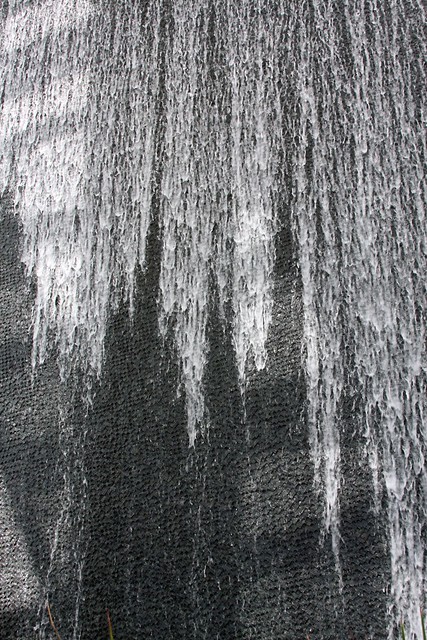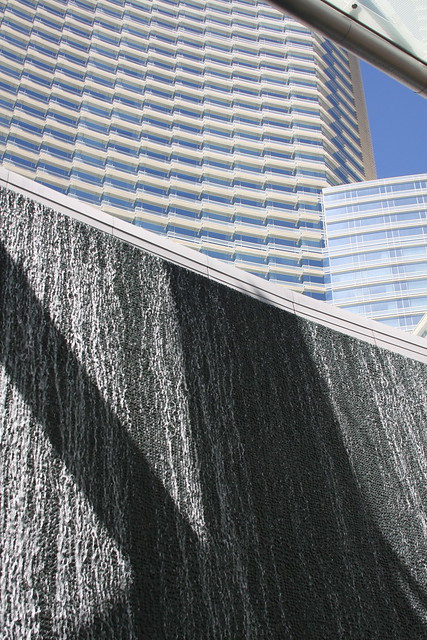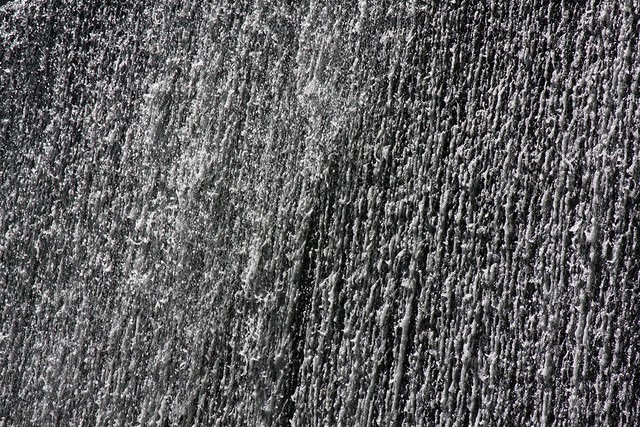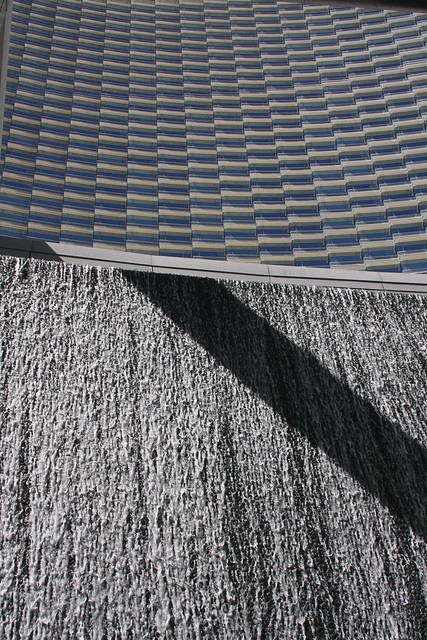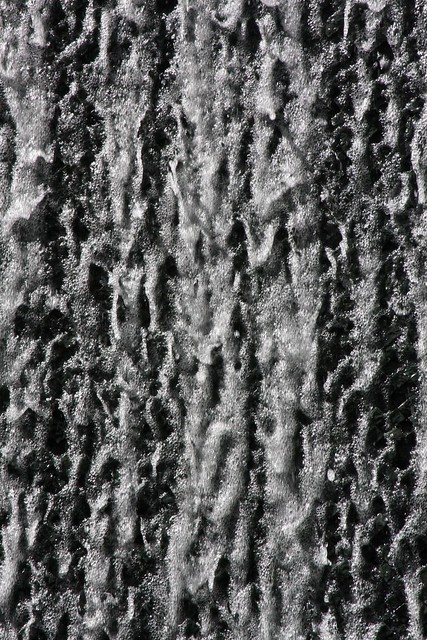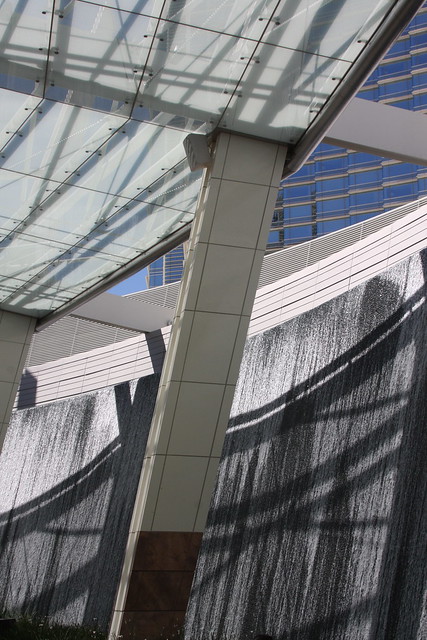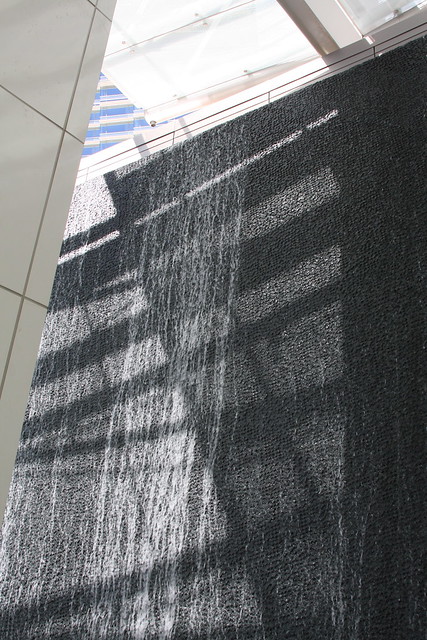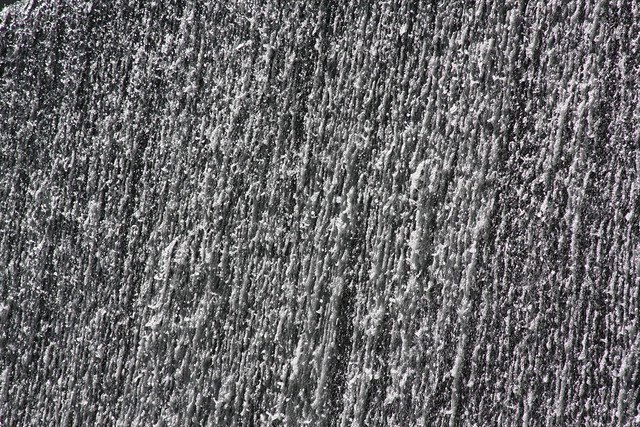View Larger Map
Today's adventure takes us out to obscure Ruckel Creek Falls in the Columbia River Gorge. Despite its obscurity it's quite easy to get to, once you know how. Ruckel Creek is far overshadowed by Eagle Creek and its many waterfalls just to the west, and this waterfall is really not all that big by Gorge standards. So it's overlooked, but not really unfairly overlooked. On the other hand, if you've been to all the better known waterfalls in the area and you're in the mood to track down one you've never seen before, this is one of the easier ones to do. And then you can tell people about the obscure waterfall you found and thus obtain valuable street cred, if you're into that.
The easiest way to get there is to park at Eagle Creek and walk east. There are two ways to do this: There's a flat asphalt bike path that begins next to the fish hatchery, which runs right next to I-84 for part of its length. The path is actually a repurposed & repaved segment of the old Gorge Highway, including the original bridge over Ruckel Creek circa 1914 or so. The path continues on to the town of Cascade Locks. So don't be totally surprised if you come across joggers or kids on bikes. Actually you could park in Cascade Locks and walk from there. That way would be a couple of miles longer and kind of monotonous most of the way, but you wouldn't need to buy a Forest Service day pass to park, and you could grab an ice cream cone at the East Wind on the way back. But I digress.

There's also a trail that winds around along the edge of the Eagle Creek campground for a bit before dumping you out on the aforementioned bike path. If you want this to feel a little more like a real hike, by all means take the trail, but it's really not all that scenic. If you're just trying to get to the waterfall, you might as well just take the bike path the whole way.
Finding the falls from the path ought to be easy, but for some reason there are no signs for the falls, and there's no official trail to the base. So I'm going to reveeal the semi-super, semi-secret trick for finding the falls.
First, as you're walking along the path, you'll come across a grassy meadow. If you come to the bridge over Ruckel Creek, you've gone too far. You can look down from the bridge and see the top of the falls, but to get to the base you'll need to backtrack a little. In any case, you're looking for an unexplained & unmarked turnout off the path that looks like this:

The above photo is pointing west, just past the turnout. The turnout is where you leave the path and go cross country for a bit. Which sounds vastly more adventurous than it really is. You just need to walk to the far end of the meadow until you come to the edge of the forest. There's no real trailhead here, but if you can find a spot that looks like the next photo, you've found one of the unofficial trails. There may be other entrances, and this one may not look the same when you visit.

Your best bet is to bring a GPS gadget along. You're looking for something in the vicinity of GPS coordinates 45.644810, -121.919522 (i.e. the green arrow on the embedded map). This is the location of the trail, not the location of the waterfall itself.
If you can find the sorta-trailhead, just follow the trail downhill from there. If you can't find it, don't worry. Once you're in the woods you ought to be able to hear the falls, so just walk toward the sound. The falls are going to be downhill and should be on your right. If you find the creek first, just follow it upstream. I don't have exact coordinates for the waterfall itself as I couldn't get a GPS fix there, but it really shouldn't be hard to find.

So there you are, in front of Ruckel Creek Falls in all its glory. If you're up for a real challenge, it seems this is not the only waterfall on Ruckel Creek. There are a number of others (the exact count varies) and several are significantly taller than this one. But getting to them involves bushwhacking through rough terrain. Which I may or may not get around to at some future date.

All of these other waterfalls are even more obscure than the one we're visiting here, and there's a lack of agreement on what their names ought to be. In particular, it's not clear whether this one is "Lower Ruckel Creek Falls", or whether that name applies to one further upstream leaving this one without a proper name. But I've also seen this one called simply "Ruckel Creek Falls". I'm going to go with that in the name of simplicity.

Elsewhere on the interwebs, you can find more info about the falls at Ash Creek Images and
Waterfalls Northwest, and lots of info about all the waterfalls on Ruckel Creek at Oregon Hikers Field Guide.










